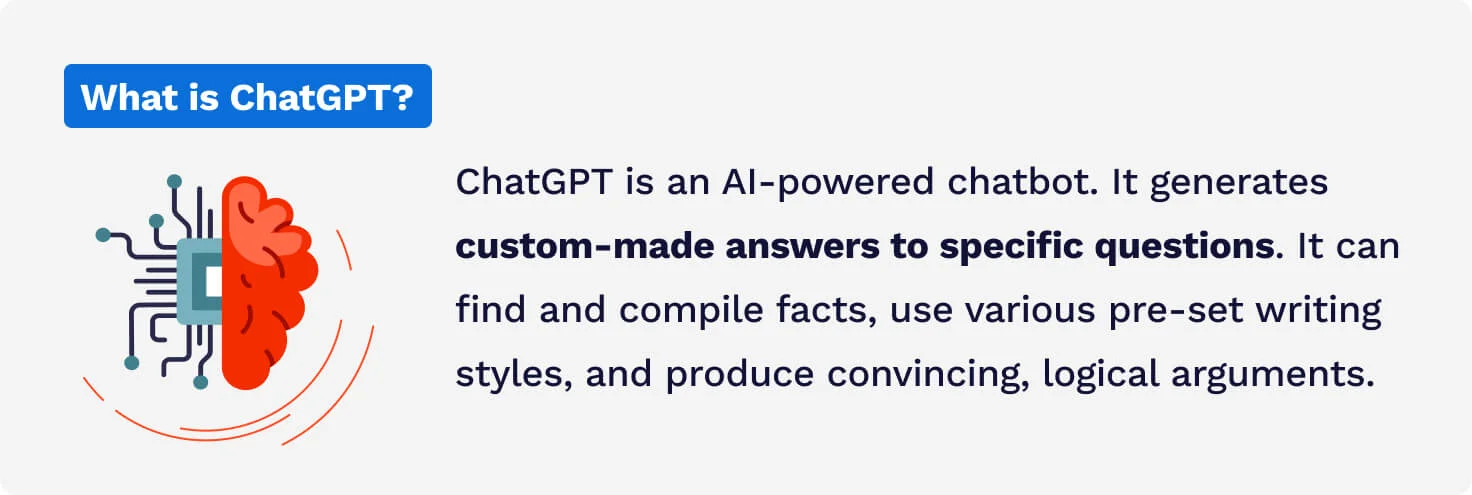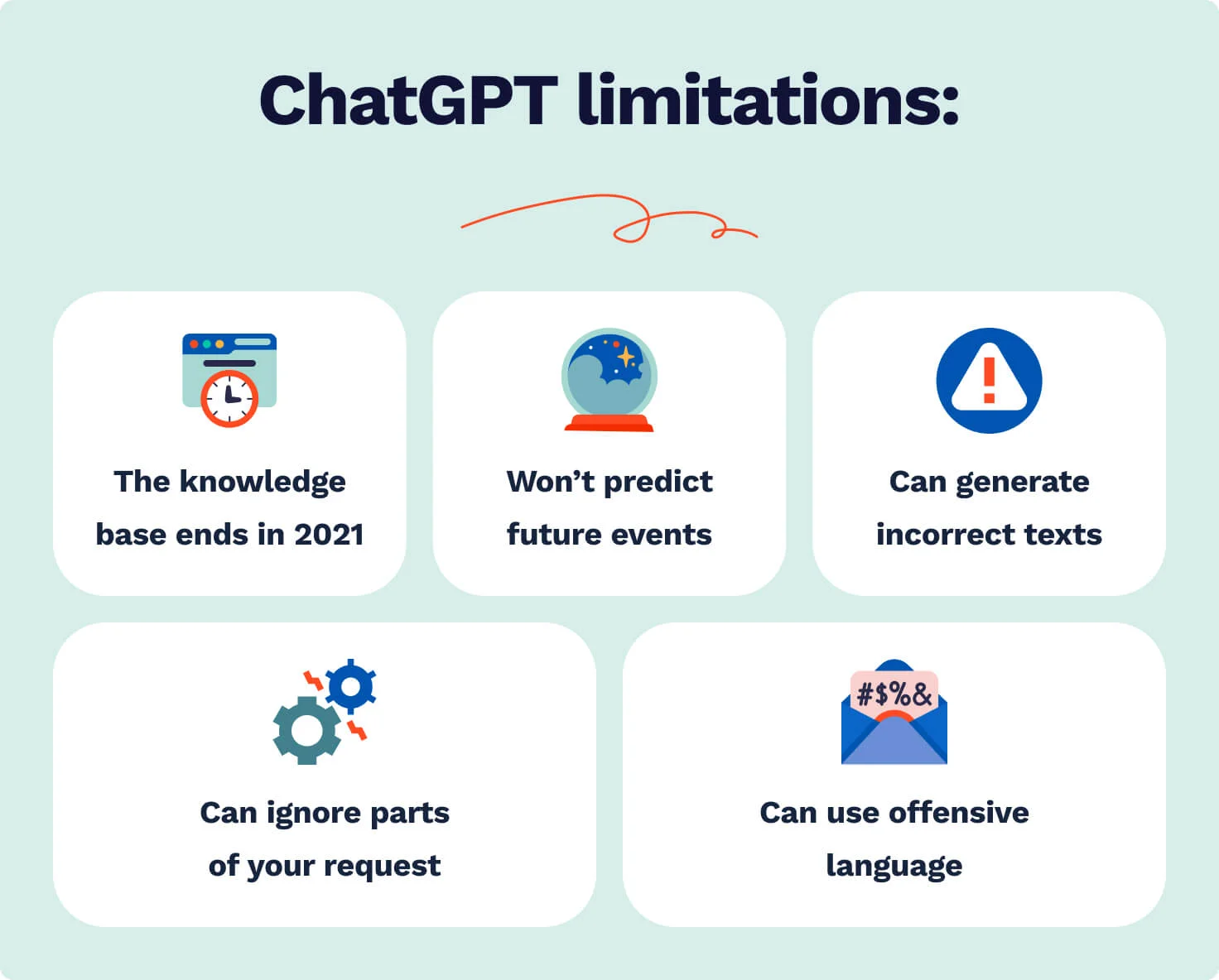✅ Chat GPT Detector Benefits
🛠️ Chat GPT Essay Detector: How Does It Work?
To use the tool, take the 4 steps below:
- Add the content in question (up to 4500 characters).
- Input its topic, title, or short description (optional).
- Click “Check the text”.
- Get a detailed analysis for free.
Automatically generated texts have become a considerable problem for teachers in 2023. Developing an accurate AI essay detector is the hottest research area now. The Chat GPT detector we’ve made is an instrument that shows the probability for a text to be AI-generated.
The tool’s functioning is effortless:
Enter the text, press the button, and check the result.
The Chat GPT checker will analyze the piece in detail, showing the proportions of words in the text based on how likely an AI writer would use them. As a result, you can edit the most predictable words and sentences if needed, making the text look 100% human-written.
🤖 Chat GPT Detectors: Why Are They So Important?
Chat GPT, created by OpenAI, has been a pain in the neck for teachers since its creation.

The tool is what our parents considered science fiction. It generates custom-made answers to specific questions and can take your prompts into account.
An unprecedented threat is looming over the conventional system of education in general and independent writing assignments in particular. How can we assess and develop students’ problem-solving and critical thinking?
Chat GPT can find and compile facts, use various pre-set writing styles, and produce convincing, logical arguments. To make it even better (and worse!), it has impeccable grammar, although users can choose to add grammatical errors for credibility. Last but not least, for now AI essay detection is problematic, because traditional plagiarism detectors fail to identify Chat GPT generated papers correctly.
The first decision came: NYC blocked Chat GPT on campuses, and other education departments will soon follow them. But no one can control non-educational Internet networks and devices.
We are standing on the verge of the “Big Bang” in our perception of education methodology. Here’s what can happen:
- Most likely, educators will have to move away from formulaic writing with strict rubrics.
- Colleges won’t dedicate as much time to theoretical knowledge and give more ways to practice.
- Students will be encouraged to explore information worth knowing.
- Specific homework assignments will become outdated.
- Creativity will become more critical than knowledge.
- All schools will use ChatGPT essay detectors like they used plagiarism detectors in the era of Google.
❌ Chat GPT Essay Writing: Limitations and Ethical Issues
ChatGPT is impressive but not flawless. As of the moment, it has such limitations.

Chat GPT Essay Writing Limitations
- Don’t expect it to answer questions about what happened after 2021. For example, it doesn’t know much about Biden’s presidency, Omicron, the Russian invasion of Ukraine, or the death of Queen Elizabeth II. That’s why you shouldn’t ask GPT to write an essay on, let’s say, Russian invasion of Ukraine.
- ChatGPT isn’t able to keep up with the latest events. Training the tool on this information takes time. Perhaps, software engineers will eventually solve this issue.
- It can generate incorrect texts if it gets the question wrong. You took it right. It is a human-like intelligence, and mutual misunderstanding is in our veins. But paraphrasing the query can improve the result.
- Adding too many parameters, getting niche, or asking tricky questions overwhelms the program. It will give inappropriate answers or ignore parts of your request.
- It can use offensive language like all of us in some cases.
AI Essay Writing: Ethical Issues
The ethical issues of AI essay writers are also explicit.
AI nominally filters out requests in writing that go against the service’s policy. That’s why you won’t be able to produce harmful content using the program. Meanwhile, merely asking it to help generate a text from a racist’s point of view is acceptable and doable.
The program takes concepts and words from a dataset containing texts from the Internet. The latter has never been a peaceful and ethical place. So, despite an astonishing understanding of moral issues the AI has demonstrated, it can use human biases and stereotypes, purposefully or not. It can neither differentiate fake news nor conspiracy theories.
In this aspect, developers have a long way to go.
🔎 AI Essay Detector: Does it Work?
AI detection is hardly possible for the human eye. The only difference is that computer-generated texts stick to the most likely word. Meanwhile, people often choose unpredictable words that still make sense to a knowledgeable audience.
But one cannot fool a computer. This AI detector for essays shows how likely a text has been machine-generated or written by a human. The tool works similarly to AI text generators. It analyses the predictability of each word in a sentence. If the selection is highly predictable, AI has created the text. The more terms are used in unusual places, the more life-like the text is.
Updated: